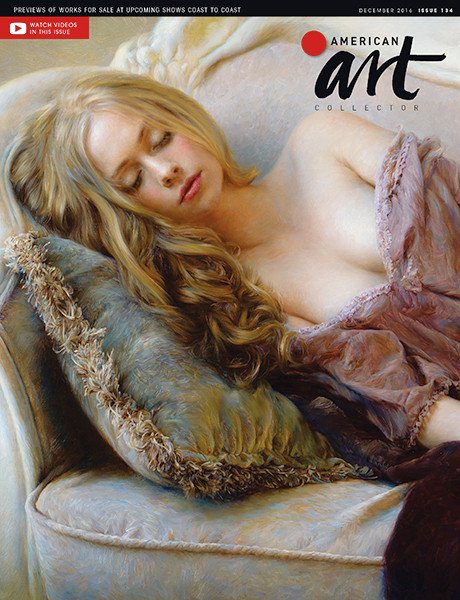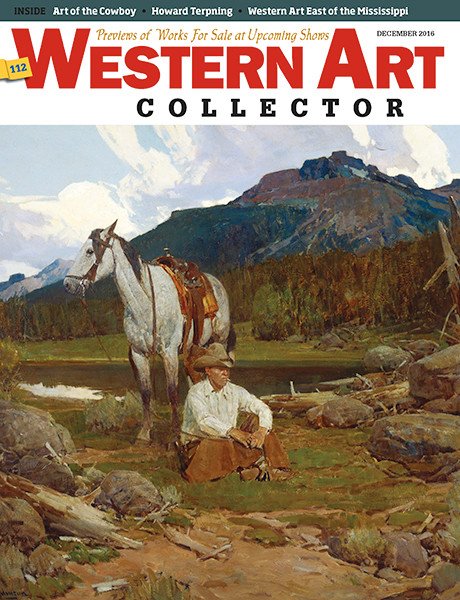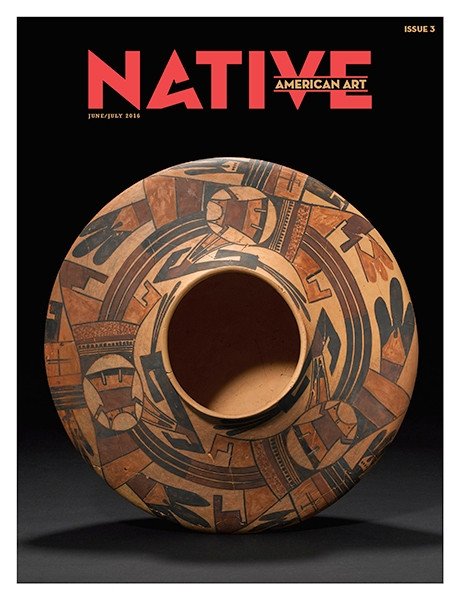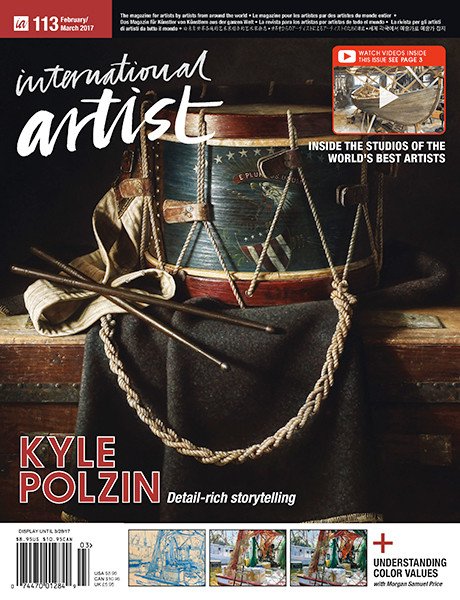Soulis Auctions
529 W Lone Jack Lees Summit RdLone Jack, MO 64070
8166973830
Email this Gallery
Visit Gallery Website
Soulis Auctions
1/1/2024 - 2/24/2024
And They Crucified Him
Robert Elton Tindall (Independence, Mo. 1913-1983)
Egg Tempera on Board
The rare egg tempera painting by Kansas City area artist Robert Tindall is signed lower left front and displayed in its original frame with exhibition labels verso.
Paintings by Robert Elton Tindall of Kansas City and Independence, Missouri are quite rare. Few examples have been documented, and there are no records on Internet databases of his works ever having been offered at auction anywhere. The egg tempera painting up for bid here is the largest of the few that are known in this medium, and the most complex.
In 1940, Thomas Hart Benton organized a show with the Associated American Artists in New York for what he considered to be his most talented students of the previous two years. The catalog for that exhibition lists four works by Robert Tindall (50. Pumpkin Vine, 51. Stop. Look, Listen, 52. Old Gem, 53. Winged Victory). Add to these a few pieces that were sold from Tom and Rita Benton's estate, and a few others for sale at Kodner Gallery in St. Louis - and the total number of paintings known to date by this talented artist equals 15 or less.
Before his studies at the Kansas City Art Institute, Robert Tindall earned a BA and MA at the University of Kansas. Between 1940 and 1950 he participated in group exhibitions from Denver to New York. In the decade that followed. he enjoyed a number of one-man shows and exhibitions around the Midwest. It could be that the label on the work up for bid here relates to one of these.
This powerful composition, rich with figurative detail and symbolism, fully embodies the artist's range and talent. Some biographers emphasize the delicate nature of Tindall's painting and the sensitivity of it; while others address his penchant for surrealism. His mastery of the egg tempera technique, and the radiance he achieves work to complete the mood and boost the dramatic intensity of this picture.
The ancient scene is populated by animated, muscular, young male figures curiously depicted with 20th century hair styles and hybrid, ambiguous tight fitting garb. The composition arrangement displays the influence of not only Benton, who taught both Tindall and Tindall's instructor Edward Laning, but it also echoes the influence of another of Laning's teachers, Kenneth Hayes Miller. Miller understudy Paul Cadmus, who, like Tindall, worked a great deal in the egg tempera medium, comes to mind as well.
Tindall spares no symbolism or detail. Loose dirt and a place to stand the cross are extreme left. The men in the scene barter for Christ's shroud and personal effects as did the Roman soldiers of antiquity. A skull far right perhaps represents the universality of Christ's sacrifice and or redemption for mankind. A tomb, storm clouds, a tree sprouting the greenery of hope, a river flowing to the father's throne, and other allegories are depicted.

Cherokee Farmer aka Citizen
Charles Banks Wilson (1918-2013)
Egg Tempera
This unusual egg tempera painting on Masonite is directly related to a very rare lithograph Wilson composed in 1938 during his second year of studies at The Chicago Art Institute. That very early lithograph, number 1 in David C. Hunt's catalog raisonne The Lithographs of Charles Banks Wilson, is titled Cherokee Farmer.
In Hunt's catalog, Mr. Wilson referred to this image saying '' My 1938 version of American Gothic voiced a truth I repeated for years to come: Hey, the American Indian no longer rides a Pinto pony and chases buffalo across the prairie!''
This work is signed CHARLES BANKS WILSON in black pigment lower left front.

Chinaberry Trees
Doel Reed (1895-1985)
Aquatint Etching
The rich, velvety aquatint etching is signed by the artist in pencil below the image lower right and titled lower left; numbered 13 from an edition of only 25 prints,
No record of this very rare print at auction, in museum collections or dealer inventories could be found. This print is apparently quite rare and obviously very desirable.

County Politics
Thomas Hart Benton (1889-1975)
Lithograph
The lithograph published by Associated American Artists in an edition of 250 prints is signed by Benton in pencil below the image lower right and listed as Fath catalog number 89.
This fine impression with outstanding contrast, dark saturated inking in the right areas with proper highlights and tone, is in exceptional condition.
Benton's comments in this image in Fath read: 'County Politics' shows what we used to call 'The Court House gang' arguying[sic] out its allegencies, favors, rewards and punishments. Every rural Court House had one and probably still does. Those who run for public office, however high, must take these gangs into account. They know where the votes are and how to round them up.

Land of Mystery
Coy Avon 'C.A.' Seward (1884-1939)
Linocut
The linocut block print is signed and dated 1930 by the artist in pencil below the image lower right and titled lower left, signed and dated within the block as well.

Le Petite Méditerranée OR La Méditerranée, étude
Aristide Maillol (1861-1944)
This dark greenish brown patinated bronze figure of a seated nude is signed with the artist's monogram of interlaced AM in the casting and numbered 6/6 near the founder's mark Alexis Rudier, Fondeur, Paris.
This figure from 1902 served as an early study for a large statue of the same subject first exhibited in Paris in 1905.
Maillol began in a drawing course at the École des Beaux-Arts around 1881. He later became interested in tapestry before settling on sculpture for which he gained international recognition. The female figure was his primary subject and he is credited by many for setting the tone of Modern sculpture. As recognition grew, Maillol would create many versions of his original La Méditerranée the subject up for bid here.
Provenance: The collection of Dr. William H. Potts of Dallas, Texas by descent to the current owners. An original sales tag from Perls Gallery is pictured here and included with the lot. A label from Musee de Art Moderne is pictured but the original is not included.

Mother and Child
Arlie Regier (Kansas 1931-2014)
The grouping of abstracted figures on an open box base is stamped AJR and dated 1971.
The title and other information are provided by hand written correspondence from the artist.

Peonies of 1924
Birger Sandzen (1871-1954)
Oil on Canvas
The scarce and desirable still life composition of pink, red, and white peonies in an orange vase on blue table covering is signed lower left front and titled in the artist's hand verso along the top stretcher. Out of 285 paintings by this artist archived on Artprice.com, less than ten floral still life compositions can be found.
Listed as number 924 in the Sandzén archives card catalog, where the title and date of composition are on record, it is confirmed that this painting was first owned by a Manhattan, Kansas resident who was a great friend of the artist, and a professor of English at Kansas State University. It descended that family to a local fraternity before going to the Kansas University's Beach Museum for storage where it remained until 2022.

Portrait of Dr. Percival Pott
Nathaniel Dance-Holland (1735-1811) Attributed
Oil on Canvas
The three-quarter length portrait depicts Dr. Pott in red academic robe and formal white wig seated beside a table with leather bound volumes. Doctor Pott lived from 1713 to 1788. Judging by his age at the time of sitting, this portrait dates to around 1770.
An previous appraisal of this painting references a letter from the London art dealer Frost and Reed indicating that, according to the Royal College of Surgeons, this painting was painted by Sir Dance Holland also known as Nathaniel Dance-Holland (1735 - 1811). Neither of these letters are extant at the time of cataloging. This unsigned painting is displayed in a gilded gesso and wood frame of similar age.
Dr. Percival Pott was a pioneering figure in the field of surgery during the 18th century. He is also highly regarded for his contributions to the understanding of occupational diseases like Chimney Sweeps' Carcinoma, where he identified soot as the cause of chimney sweeps' occupational cancer. Some sources also associate his findings with the discovery of tuberculosis. He was one of the founders of orthopedics and eponyms like ''Pott's cancer'' and ''Pott's fracture'' continue to be associated with his name in the medical literature. The term Pott's Fracture actually derives from an injury the doctor himself suffered when thrown from a horse riding down Kent Street in Southwark in 1756. Suffering a compound fracture of the leg, but still conscious, he knew as a surgeon that it was often rough and improper treatment at this stage of an injury that prevented proper healing and lead to amputation. He waited on the cold January ground until a door could be delivered and fitted with carrying poles so he could be removed lying down. His attendants carried him through Southwark over London Bridge to Watling Street near Saint Paul, where he lived, and a consultation of surgeons thought the case so desperate that immediate amputation was the only answer. Doctor Pott prevailed and the leg was saved. To this day, this type of ankle fracture is still referred to as 'Pott's Fracture.' During his convalescence, Dr. Pott began his writings and went on to publish a number of books on the practice of surgery. In 1764, he was elected a fellow of the Royal Society of Surgeons.

Scene from Rocky Mountain National Park
Birger Sandzen (1871-1954)
Oil on Canvas
The complex, beautifully crafted composition of a high altitude lake and towering rock formations before mountain peaks is signed lower right front.
Birger Sandzen was probably first exposed to the painting technique of pointillism during his studies in Paris with Edmond Aman-Jean in 1894. Aman-Jean shared a painting studio with Georges Seurat who, along with the French painter Paul Signac, developed the painting method that became known as Pointillism.
Many of Birger Sandzen's earlier works display the methodology of Pointillism, a painting approach that Britannica defines as, ''the practice of applying small strokes or dots of colour to a surface so that from a distance they visually blend together.''
This well describes the canvas up for bid here (and four early block prints in this auction as well).
skillfully rendered painting is a fine example of the artist's own style blending pointillism and impressionism to create his own unique style of painting. These works, skillfully built one stroke at a time, are the result of hundreds of applications, perhaps thousands, skillfully placed on the canvas in colors and shades and methods that work together to create visually powerful images like the painting up for bid here.

Stars
Maxfield Parrish
Mechanical Print
The original late 1920s large format print titled Stars, exhibiting excellent color, is displayed in an exceptional frame with unique carved and painted gesso mat.

Study from the Rocky Mountain National Park
Birger Sandzen (1871-1954)
Oil on Canvas
This composition of a timberline view in Colorado's Rocky Mountains is an excellent example of the artist's bold approach to laying paint on canvas during what scholars refer to as his 'Middle Period.' In these, and other paintings, but particualrly during this period, paint was applied in singular, often short, confident strokes of thick impasto in unique, attractive colors. This Middle Period has been referred to as, ''the most dynamic and important of Sandzen's career.'' by the Birger Sandzen Memorial Gallery in Lindsborg, KS.
Sandzen spent nearly every summer in Colorado from 1908 through 1952. ''I have been in many places, but there is none which adapts itself any more to my desires than this,'' Sandzen said of the Pikes Peak region in 1923.
Signed lower left front and listed as number 655 in the Sandzén card catalogue archive, these records also provide the painting's title and that it was first owned by a professor at K-State before finding its way to a campus fraternity around 1946, and later to storage with the University's Beach Museum for some years.

Tending the Cabbage Patch
George Van Millett (Missouri, 1864-1953)
Oil on Canvas
The sunlit rural America genre scene depicts a figure flanked by stands of mid-summer flowers tending a patch of cabbage skillfully depicted with amazing luminosity and sunlight through the leaves.
The sun-drenched rural American genre scene portrays a figure amidst stands of mid-summer flowers, attentively tending to a patch of cabbage. The skillful depiction captures remarkable luminosity, with sunlight filtering through the leaves.
The work is signed Millet in black pigment lower right front.

The 1964 World's Fair Unisphere
Hugh Ferriss (1889-1962)
Charcoal on Paper
The important, documentary, original charcoal rendering is executed on artist's illustration board and signed Hugh Ferriss del in white gouache lower left front. The surface is sealed with fixative, displaying a subtle shine on close inspection.
Dramatic portrayals of Futuristic and Modernistic architecture and monuments was the specialty of Hugh Ferriss. His 1929 book The Metropolis of Tomorrow was filled with just such renderings depicting real and imagined architecture and cities. He documented the majority of famous existing buildings, bridges, dams and other feats of human endeavor of the day. The large composition up for auction here is most likely the last of Ferriss' major works.
The Unisphere (unis being the Latin word for 'one' and the root of the words unite and union) is a massive 140 foot stainless steel armillary sphere representing the earth itself. It was commissioned to celebrate the beginning of the space age (Kennedy had committed the nation to an ambitious space program the year prior) and constructed to create the symbolism of world ''Peace Through Understanding'', theme of the 1964 World's Fair.
Ferriss' composition is exacted in profuse detail with thousands of people and hundreds of national flags being documented in detail.
Hugh Ferriss was a Missouri native. This lost work was recently found in a Missouri home. No other provenance exists.
Still today, the Hugh Ferriss Memorial Prize is awarded by the American Society of Architectural Illustrators in recognition of excellence in the graphic representation of architecture. It is the Society's highest award.

Verbena Time on the Desert
Fred Grayson Sayre (1879-1939)
Oil on Canvas
The expansive California desert oil on canvas landscape with blankets of verbena in bloom and mountains at a distance is signed lower left front. The title is lettered in graphite along the top stretcher verso.
This outstanding example ranks in the top 5% of Sayre's output for size. The composition and palette are superior as well, displaying the luscious pleasing colors most sought after by collectors.
This fresh-to-the-market work in its original frame has been in the same family collection since the early 1970s.




